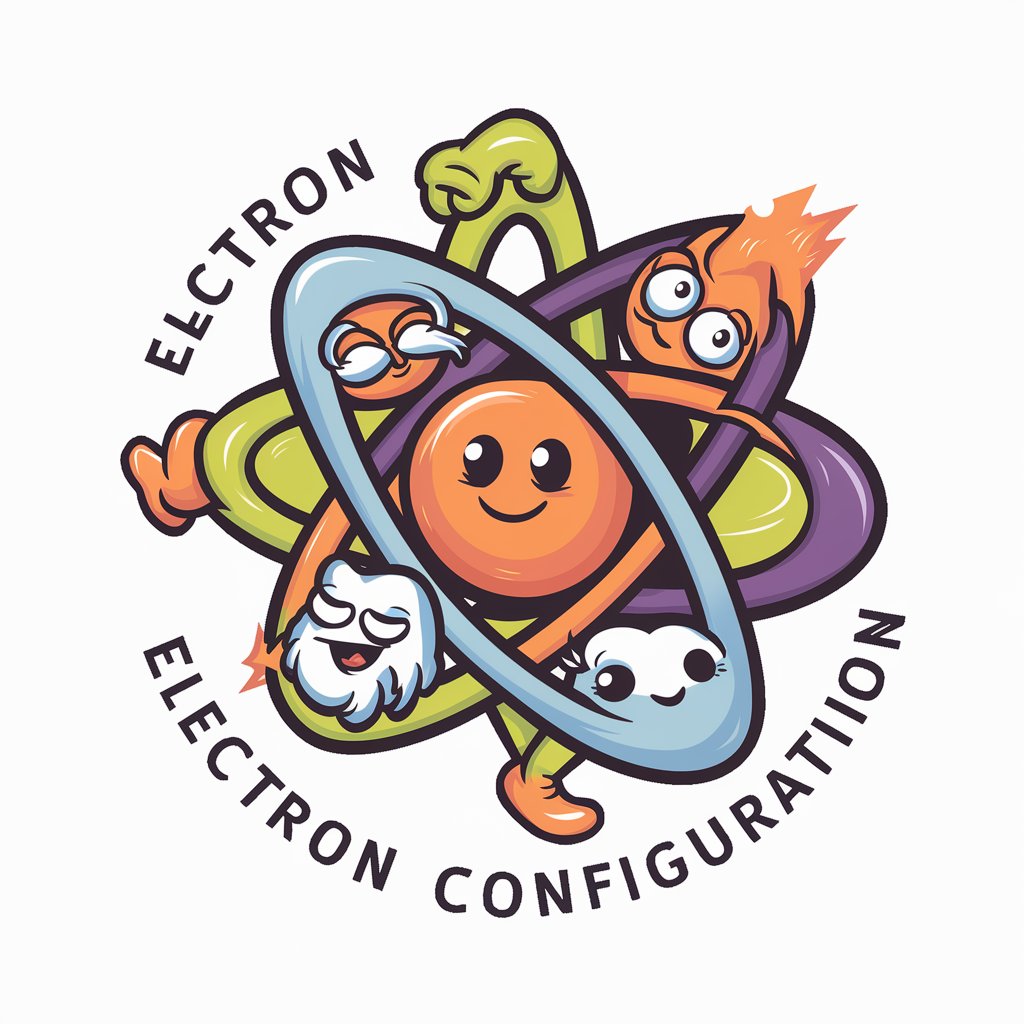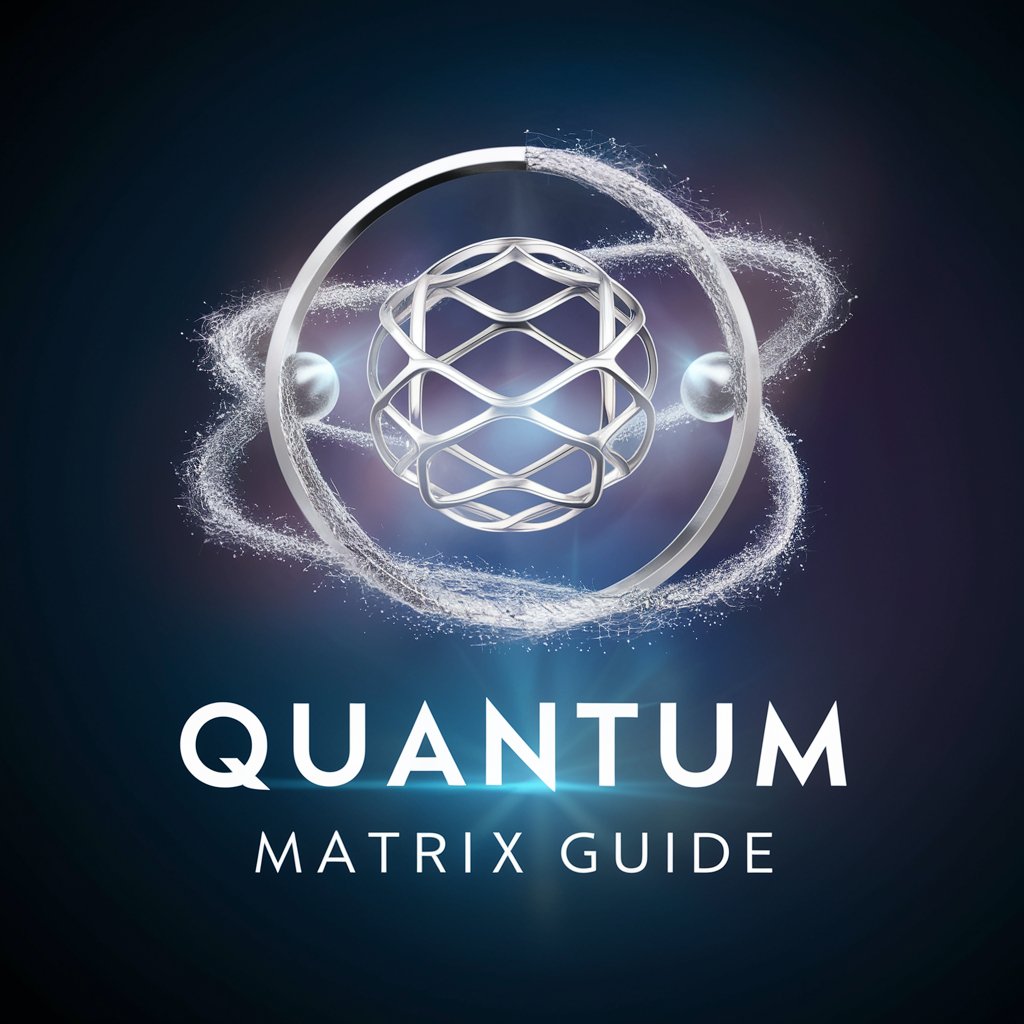Electron Configuration "organic chemistry" - Visual Organic Chemistry Aid

Hello! Let's explore the world of electron configurations together.
Simplifying electron configurations with AI.
Explain the electron configuration of carbon using cartoon characters.
Describe how state changes affect electron configurations in organic chemistry.
How do different isotopes of an element interact in solutions?
Illustrate a chemical bond formation between two elements with cartoon characters.
Get Embed Code
Overview of Electron Configuration 'organic chemistry'
Electron Configuration 'organic chemistry' is a specialized AI designed to assist users in understanding and visualizing the electron configurations relevant to organic chemistry, focusing on the interaction of atoms and molecules at the quantum level. Through the unique approach of portraying elements and their electrons as cartoon characters—where elements with a closed-eye, folded electron (-e) represent a specific state and those with wide-eyed, open electrons (+e) symbolize another—this AI makes complex chemical concepts more accessible and engaging. For example, it can illustrate how carbon atoms share electrons to form strong covalent bonds in organic compounds or how the electron configuration of oxygen affects its reactivity and bonding patterns. Powered by ChatGPT-4o。

Key Functions of Electron Configuration 'organic chemistry'
Visualizing Electron Configurations
Example
Demonstrates the electron configuration of carbon in various organic molecules, using cartoon character analogies to explain hybridization states (sp3, sp2, sp) and their impact on molecular shape and reactivity.
Scenario
Helpful for students learning about the structure of organic compounds, such as alkanes, alkenes, and alkynes, and understanding the geometrical arrangement of atoms.
Explaining State Change Transformations
Example
Uses cartoons to depict the transition of electrons during redox reactions, highlighting how elements 'gain' or 'lose' electrons (+e or -e), impacting the oxidation state and energy levels of molecules.
Scenario
Useful in teaching the principles of oxidation and reduction, particularly in organic reactions like combustion or the oxidation of alcohols.
Illustrating Isotope Effects
Example
Shows the differences in behavior between isotopes of the same element in organic reactions, emphasizing the role of neutron variation in physical properties and reaction rates, depicted through varying sizes or weights of the cartoon characters.
Scenario
Beneficial for advanced students studying kinetic isotope effects in mechanisms of organic reactions.
Target User Groups for Electron Configuration 'organic chemistry'
Chemistry Students
Students at high school or university levels, particularly those studying organic chemistry, who need a more intuitive understanding of electron configurations, bonding, and molecular structure. The visualization aids in grasping abstract concepts and complex reaction mechanisms.
Educators and Tutors
Teachers and tutors looking for innovative methods to explain and demonstrate chemical concepts. The character analogy provides a creative and engaging way to teach electron configurations, bonding theories, and the effects of isotopes in organic chemistry.
Amateur Chemists
Individuals with a keen interest in chemistry who seek to deepen their understanding of chemical interactions at the atomic level. The service offers a fun and accessible way to explore organic chemistry beyond traditional textbooks.

Guidelines for Using Electron Configuration 'Organic Chemistry'
Start Your Journey
Begin by accessing a platform offering a free initial experience without the need for logging in or subscribing to premium services.
Identify Your Needs
Determine your specific interest or challenge in organic chemistry, whether it's understanding electron configurations, isotopes, or reaction mechanisms.
Engage with the Tool
Utilize the electron configuration feature to visualize and comprehend how electrons are arranged in atoms and molecules, focusing on cartoon character analogies for elements.
Explore Advanced Features
Delve deeper into specific scenarios like state change transformations and interactions in solutions, using the cartoon elements to guide your learning.
Apply and Practice
Apply your new knowledge to solve problems, predict reactions, and understand the behavior of compounds in organic chemistry.
Try other advanced and practical GPTs
Community Calendar Helper
Empowering through AI-guided community support

Advanced Interface and Protocol Designer
Elevate Your Interface with AI Power

Room under A\C Atmospheric densitys
Optimize your air with AI-powered insights.

What Ifs?
Exploring History's What-Ifs with AI

Let Me Do The Talking ©
Speak Through AI, Be Understood Everywhere

Mix of Experts
Harness AI-Powered Expert Consulting

Quantum Game Design Architect
Crafting Quantum-Inspired Games with AI

Quantum Matrix Guide
Decoding Quantum Complexity with AI

GPT Plugin Tech Clarifier
Simplifying GPT Tech with AI

Getec b300 mother board modif
Empowering Advanced Computing

VR System Guide
Empowering VR Experiences with AI

OpenPSVR Development Assistant
Empowering VR innovation with AI

Frequently Asked Questions about Electron Configuration 'Organic Chemistry'
How can Electron Configuration 'Organic Chemistry' assist in understanding complex molecules?
It simplifies the visualization of electron arrangements within atoms and molecules, using character analogies to illustrate different states and interactions, thus making complex concepts more accessible.
Can this tool help with predicting chemical reactions?
Yes, by understanding the electron configurations and how they change during reactions, users can predict the outcomes of chemical reactions, including bond formations and breakages.
Is the cartoon character analogy useful for professional chemists?
Absolutely, it provides a unique and engaging way to revisit fundamental concepts, potentially offering new insights into electron behaviors and molecular interactions.
How does the tool differentiate between different isotopes?
Isotopes are represented with variations in the cartoon characters, highlighting differences in neutron numbers and their effects on chemical properties and reactions.
What are the best practices for utilizing this tool for academic research?
Leverage the tool to conceptualize and visualize electron configurations in research projects, ensure accuracy in electron distribution understanding, and use the analogies to explain complex ideas in academic papers.
